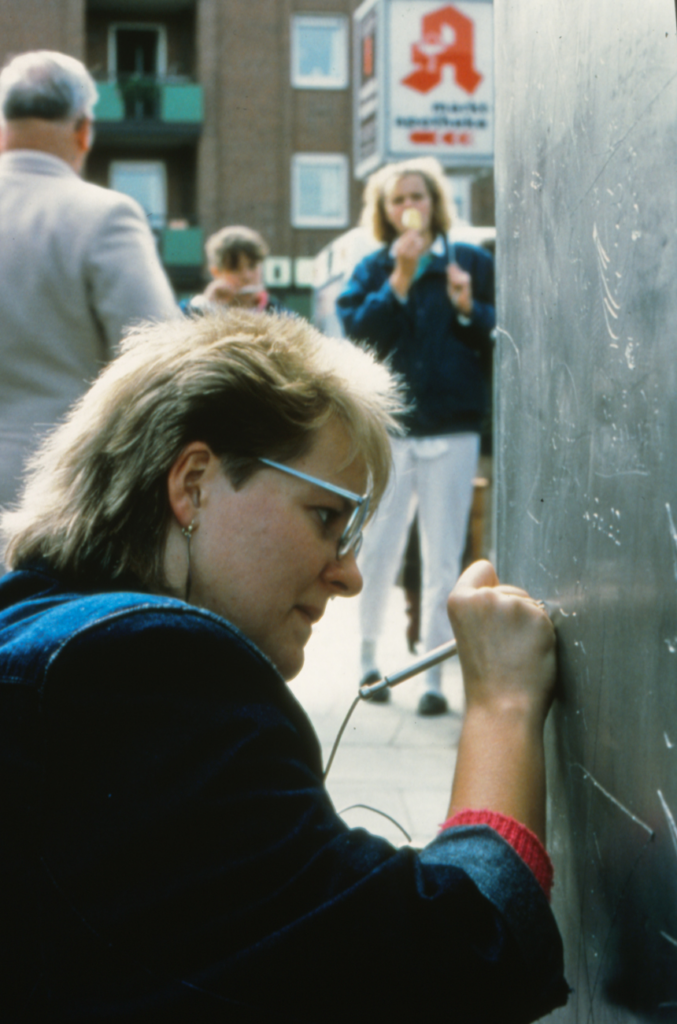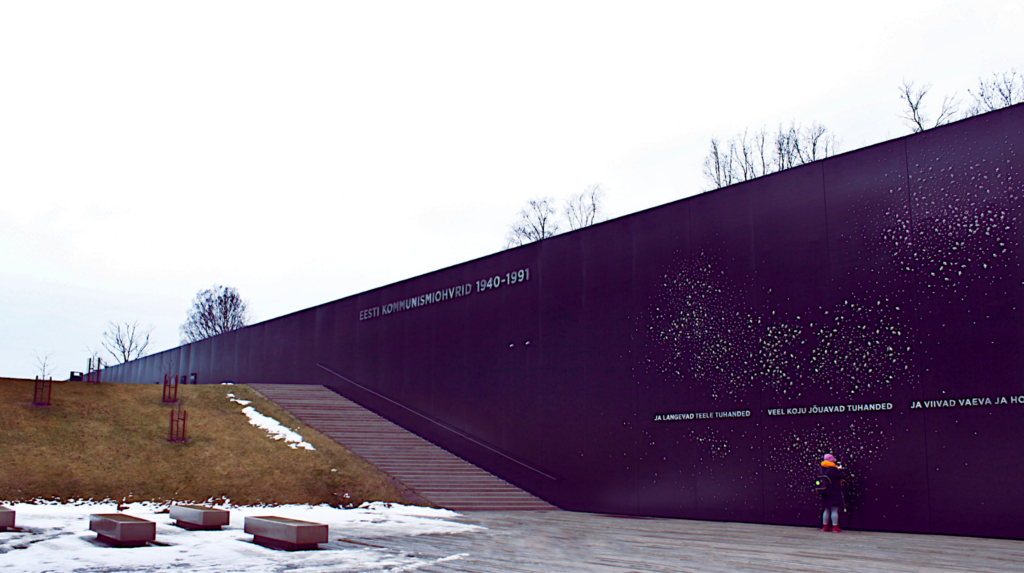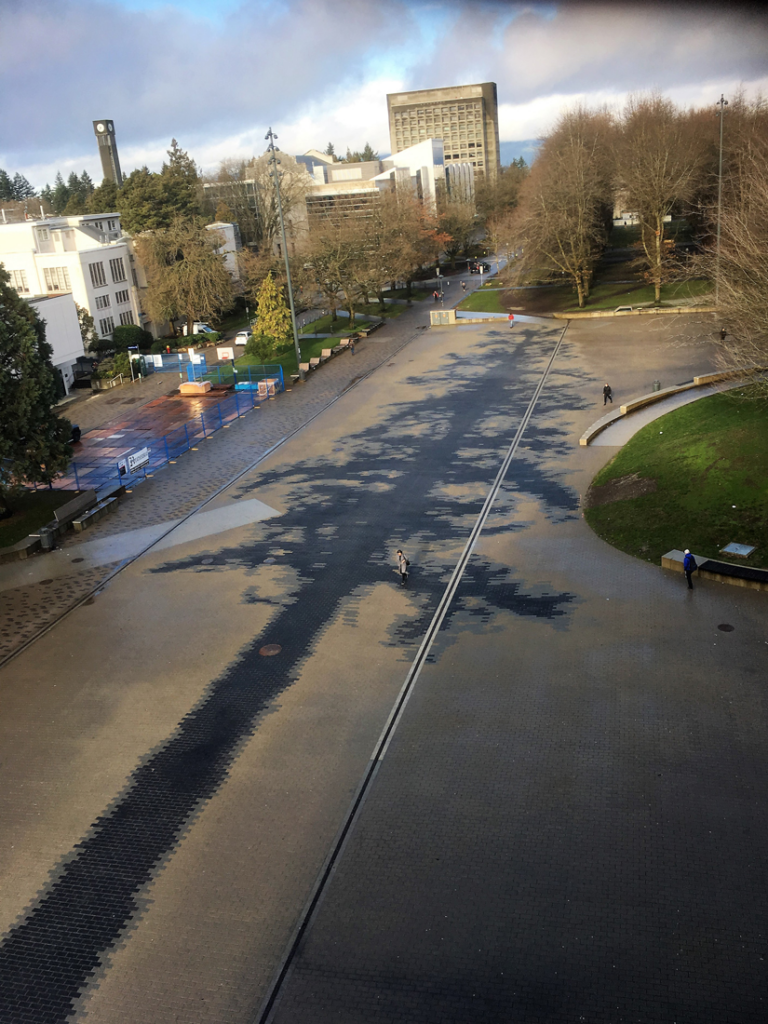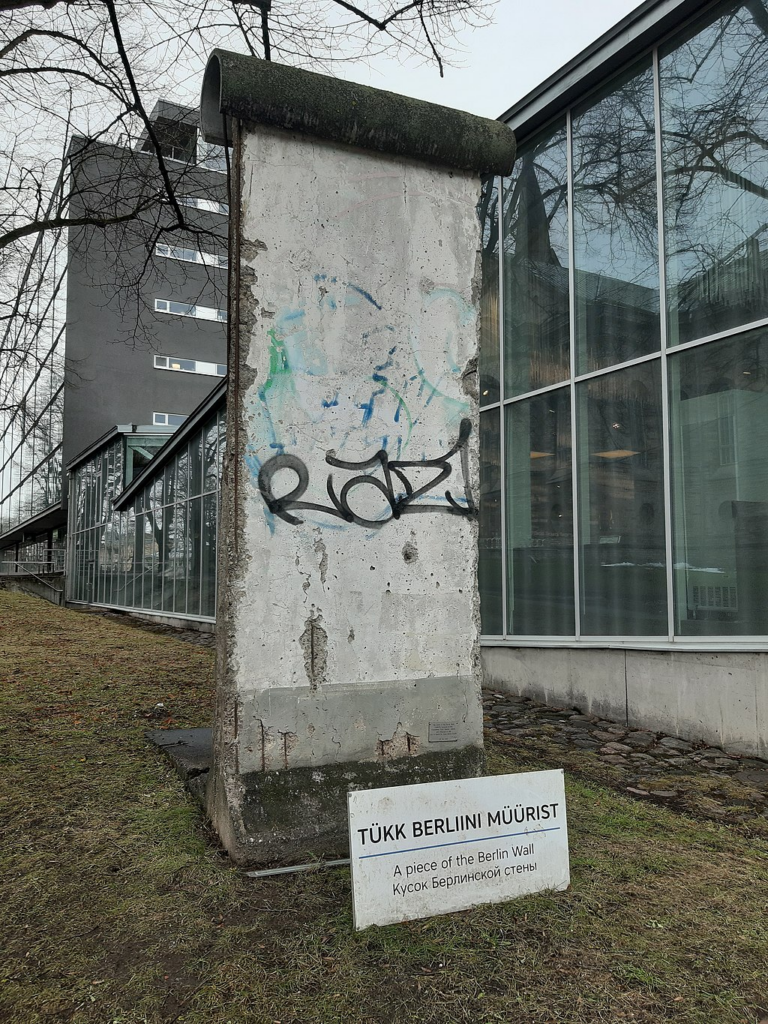Monumental Vitamin
On March 4, 2024, an annual event called PhD Vitamin took place at the Estonian Academy of Arts (EAA). It is a conference and meetings where artists and designers who are interested in doctoral studies gather. At EKA, doctoral studies take place in four disciplines: art science and visual culture studies, heritage protection and conservation, architecture and urban planning, and art and design. Art doctoral studies are a relatively new thing worldwide, as the first such programs were created in the 1990s, and Estonia’s first creative doctoral thesis on fashion industry and circular economy topics was defended by Reet Aus in 2011. In the last decade or so, artistic research, practice-based research, where an artist or designer creates a new work and interprets it textually, has developed explosively – both in terms of the number of theses published and the development of a specialized language and independent methodology. Despite this, doctoral studies can seem alien to creative people with a master’s degree, which is why PhD Vitamin was launched, where already experienced researchers talk about their practice and share tips for fruitfully continuing their studies. On this occasion, the focus was on monuments, and the participants of the event presented their scientific and artistic projects dealing with artworks and memory issues in public space.
Victoria Fareld, Professor of Intellectual History at Stockholm University, spoke at the conference about her research, which revolves around questions of historical guilt, responsibility and the temporality of memory. Artist Kristina Norman spoke about her creative practice, which focuses on issues of collective memory and forgetting, the use of public space, as well as the politics of the body that transcend the boundaries of public and private. Throughout the years, Norman has traced the monumental controversies of society, and in 2009 she represented Estonia at the Venice Biennale with “After-War”, a project that explored the conflict that accompanied the removal of the so-called Bronze Soldier, which unfortunately turned bloody. In 2022, Norman represented Estonia at the Venice Biennale with the ecocritical exhibition “Orchidelirium: An Appetite for Abundance”. Her experimental film trilogy offers a number of ways to reflect on the legacy of colonialism from an Eastern European perspective. The last speaker at the conference was the undersigned. In my presentation, I spoke about my forthcoming PhD thesis on monumental-decorative art in the late Soviet period and how contemporary artists from the Baltic countries have reinterpreted socialist-era architecture and monumental art in their work.
The keynote speaker of the conference was Esther Shalev-Gerz (b. 1948), a Jewish artist based in Paris, whose work I would like to introduce in a little more detail. Shalev-Gerz is best known worldwide for her anti-fascism monument in Hamburg (1986), which she created with her ex-husband Jochen Gerz. In the German context, the eighties can be described as a veritable ‘memory explosion’, since it was only then – two generations later – that the legacy of fascism and the issue of its (re)memorialisation began to be widely and publicly addressed on a large scale. The society-wide debate about the past (Vergangenheitsbewältigung) and, more specifically, the reflection on the specific guilt of the Germans (Historikerstreit), led in turn to a generalised monument-building movement (Denkmal-Arbeit), centred on neo-revolutionary memorials, which opposed the more conservative aesthetics of the past, and which were expected to bring a certain redemption in the public space.
Over the next couple of decades, dozens of generously funded monument competitions were held in Germany, attracting a lot of media attention, where not only the winning entries but also the competition projects sparked heated debates. Many of these works are still part of the core curriculum of various books and lecture courses on visual culture in recent history, and art students use these examples to learn how to approach monuments today. Whether it is Peter Eisenman’s Berlin Holocaust Memorial (2002), which seeks to evoke a horrifying bodily reaction, or Horst Hoheisel’s idea, put forward for the same memorial competition, that the Brandenburg Gate should be blown up – so that it would be a monument of dust and emptiness.
Peter Eisenman, Berlin Holocaust Memorial. 2002. Wikimedia Commons.
Against this backdrop, in the mid-eighties, Esther Shalev-Gerz and Jochen Gerz created an anti-fascist monument in the Hamburg suburbs, a 12-metre-high aluminium pillar that was then gradually lowered into the ground until, in 1993, only a memorial plaque remained. Apart from its disappearance, what made the work special was the fact that the townspeople were invited to engrave their views on fascism on the monument. The public took up this call, even using extreme means or hate messages. As such, however, the work was also a social litmus test.
In 1992, James E. Young, a scholar of memory studies in the United States, published an article entitled “The Counter-Monument: Memory against Itself in Germany Today” in the prestigious journal Critical Inquiry, published by the University of Chicago Press. As a historian and internationally renowned Holocaust scholar, he was involved in the above-mentioned Berlin Monument competition and, after examining the ephemeral ideas submitted, he gave the whole trend the name Counter-Monument. Counter-monuments, in the sense that these works contradicted both the traditional aesthetics of monuments and the functions that monuments are traditionally expected to perform. Put simply, whereas earlier monuments were generally triumphant, pride-inducing, (national) identity-affirming, proclaiming official narratives and with a specific field of meaning, counter-monuments sought to decentralise meanings and memory, to challenge and blur the univocal representation of historical events and to evoke subjective forms of engagement with history.
In this sense, the Harburg monument was a counter-monument par excellence, as it opposed the classical monuments in both form and content, and ultimately even annulled itself, manifesting that remembrance should be done by people, not by pillars. Although counter-monuments are still resonant today, both as an aesthetic and as a social phenomenon – the Tallinn Memorial to the Victims of Communism, for example, bears strong family resemblances to counter-monuments – they have also been widely criticised in the literature. For example, the Austrian art scholar Mechtild Widrich, in her book “Performative Monuments. The rematerialisation of Public Art” and “Monumental cares. Sites of History and Contemporary Art”, she accuses non-representational counter-monuments of failing to mediate historical events. On the other hand, perhaps counter-monuments should no longer be seen as a genre in their own right, but as a principle and a way of relating that all those involved in the creation and commissioning of monuments should be aware of.
Maarjamäe Memorial to the Victims of Communism, 2018. Kalle Vellevoog, Jaan Tiidemann, Tiiu Truus, Martin Prommik, Kersti Nigols, Liis Voksepp, Annika Liivo, Marianna Zvereva. Sculpture by Kirke Kangro. Landscaping Lidia Zarudnaya. Graphic design by Martin Pedanik. Technical design of the monument to the soldiers Margus Triibmann. Wikimedia Commons.
Esther Shalev-Gerz has created dozens of (counter)monuments in her long career, of which her website gives a good overview. At the PhD Vitamin conference, she focused on ‘The Shadow’, a work she created in 2018 on the grounds of the University of British Columbia in Vancouver, where she applied a ghostly silhouette of a 100-metre tall Douglas fir to the square using three different coloured paving stones. It is an ancient tree that, a few hundred years ago, covered the vast forested lands inhabited by the Musqueam people. In North America, there is increasing talk of land restitution to indigenous peoples, and while this may mean decades of litigation, it is remarkable that public institutions and universities are showing the monumental face of the issue by paying attention. “The Shadow” is a monumental mosaic (100 x 25 metres) on the one hand, and an almost invisible or unremarkable everyday landscape on the other. As such, the work invites us to reflect on presence and absence, erasure and negation.
Esther Shalev-Gerz, The Shadow, 2018. Vancouver, University of British Columbia. https://www.shalev-gerz.net/portfolio/the-shadow/
*
The conference ended with a round table discussion, where the talking points of the presentations were concentrated into a monumental dose of vitamins, which hopefully helped future art and design PhD students to better understand their own research position. The talk was moderated by poet, translator, litterateur and EKA PhD student Hasso Krull. Although Krull has not written directly on the subject of monuments, in a broader perspective his writings and translations have made a significant contribution to the way identity, community and spatial establishment are thought about in Estonia. He opened the conversation with a somewhat tricky example of his grandmother, telling a story about the randomness of descent and the inevitability of self-mythologies. His otherwise very modest Narva grandmother had been very proud of the fact that her distant ancestor had been a Tatar soldier of Ivan the Terrible, who had come here on a military expedition, and that her ancestor, in turn, had probably been a Genghis Khan’s soldier. This was followed by a discussion on the intertwined, dialectical relationship between remembering and forgetting, and how each monument is, in a sense, aggressive and pushes aside those themes for which there is no pillar. Victoria Fareld stressed that, in the light of Friedrich Nietzsche’s essay “On the Uses and Disadvantages of History for Life” (1874), all historical writing and monumental activity is bound up with the establishment of the power of the nation-state, and it is therefore important to bear in mind the issue of possible censorship.
Censorship led the debate on which historical events and figures we should censor and never commemorate with monuments. Should bad things be remembered and how? Krull cited the example of the National Museum of Malta, which is housed in a former Inquisitorial Palace and presents a beautifully veiled but also horrifying presentation of this part of European history. Esther Shalev-Gerz pointed out that the great art museums of the West have tacitly but consistently removed paintings depicting gross violence from their walls. One only needs to visit the National Gallery of Mexico to see how different visuals can fill public space. It remains to be seen what this representation of violence says about society (self-censorship).
Hasso Krull invited to discuss monuments also from the perspective of posthumanism. So-called deep time and deep history invite humanists to move beyond the human chronicle of history and relate it to a cosmic or geological history, based on various mineral, chemical, genetic, etc. knowledge that speaks of a post-human or trans-human sense of history. If all the monuments to date have been created by and for the glorification of a marginal human species over an insignificant few thousand years, how do we move forward from here? According to Professor Fareld, this question haunts every historian today, and it increasingly affects the terminology of history and, in particular, the foundations of the discipline – how to think about time at all. The question is also topical for artists and designers, which is why the first monuments and museum projects such as the Eden Project have been created to commemorate extinct species.
David Adjaye Architects, Mass Extinction Memorial Observatory (MEMO), 2013, Portland Island, UK.
But the trouble with memorials is always that instead of building monuments and casting them in concrete and bronze, shouldn’t we actually be dealing with the problems? After all, should we not, above all, be directing our knowledge and resources to saving the world? But life has shown that we often fail to do this and are preoccupied with decorative solutions. In this sense, monuments are strange creatures because, on the one hand, they are indeed trinkets of public space that conceal real problems, but sometimes these otherwise imperceptible monuments become real problems themselves, creating divisions and bloody conflicts between people and entire nations. That is why the panel also asked whether we should not declare a moratorium on monuments in general or, if we cannot, whether we could at least agree that, if monuments can antagonise people, then no new monument should be too harmful to nature, have a minimal ecological footprint and why not be built on the principle of reusing some of the previous monuments. Such a vitamin monument could be, for example, a piece of the Berlin Wall on the Vabamu site in Tallinn.
Example of a reused monument: a piece of the Berlin Wall next to the Vabamu. In 2014, the Berlin Senate donated to the Republic of Estonia the original element of the Wall, which was originally located on the corner of Leipziger and Stresemann Streets in Potsdam Square in central Berlin. Wikimedia Commons.
Text by Gregor Taul.








Add a comment
Comments: 3